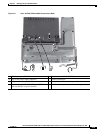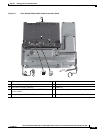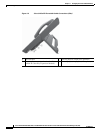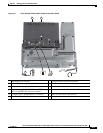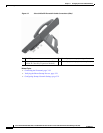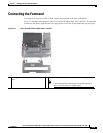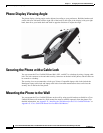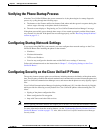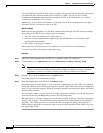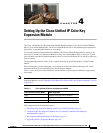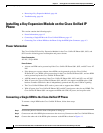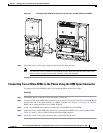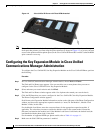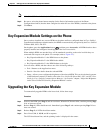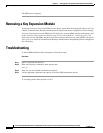
3-21
Cisco Unified IP Phone 8961, 9951, and 9971 Administration Guide for Cisco Unified Communications Manager 8.5 (SIP)
OL-20861-01
Chapter 3 Setting Up the Cisco Unified IP Phone
Verifying the Phone Startup Process
Verifying the Phone Startup Process
After the Cisco Unified IP Phone has power connected to it, the phone begins its startup diagnostic
process. by cycling through the following steps.
1. The buttons on the Feature and Session buttons flash amber and then green in sequence during the
various stages of bootup as the phone checks its hardware.
2. The main screen displays a “Registering to Cisco Unified Communications Manager” message.
If the phone successfully passes through these stages, it has started up properly and the Select button
stays lit until it is selected. If the phone does not start up properly, see the “Resolving Startup Problems”
section on page 12-1.
Configuring Startup Network Settings
If you are not using DHCP in your network, you must configure these network settings on the Cisco
Unified IP Phone after installing the phone on the network:
• IP address
• IP subnet information
• TFTP server IP address
• You also may configure the domain name and the DNS server settings, if necessary.
Collect this information and see the instructions in Chapter 7, “Configuring Settings on the Cisco
Unified IP Phone.”
Configuring Security on the Cisco Unified IP Phone
The security features protect against several threats, including threats to the identity of the phone and to
data. These features establish and maintain authenticated communication streams between the phone and
the Cisco Unified Communications Manager server, and ensure that the phone uses only digitally signed
files.
Cisco Unified Communications Manager (beginning with Release 8.5(1)) includes Security by Default,
which provides the following security features for Cisco Unified IP phones without running the CTL
client:
• Signing of the phone configuration files.
• Phone configuration file encryption.
• https with Tomcat and other Web services.
Note Secure signaling and media features still require you to run the CTL client and use hardware eTokens.
For more information about the security features, see the “Understanding Security Features for Cisco
Unified IP Phones” section on page 1-15. Also, refer to the Cisco Unified Communications Manager
Security Guide.



